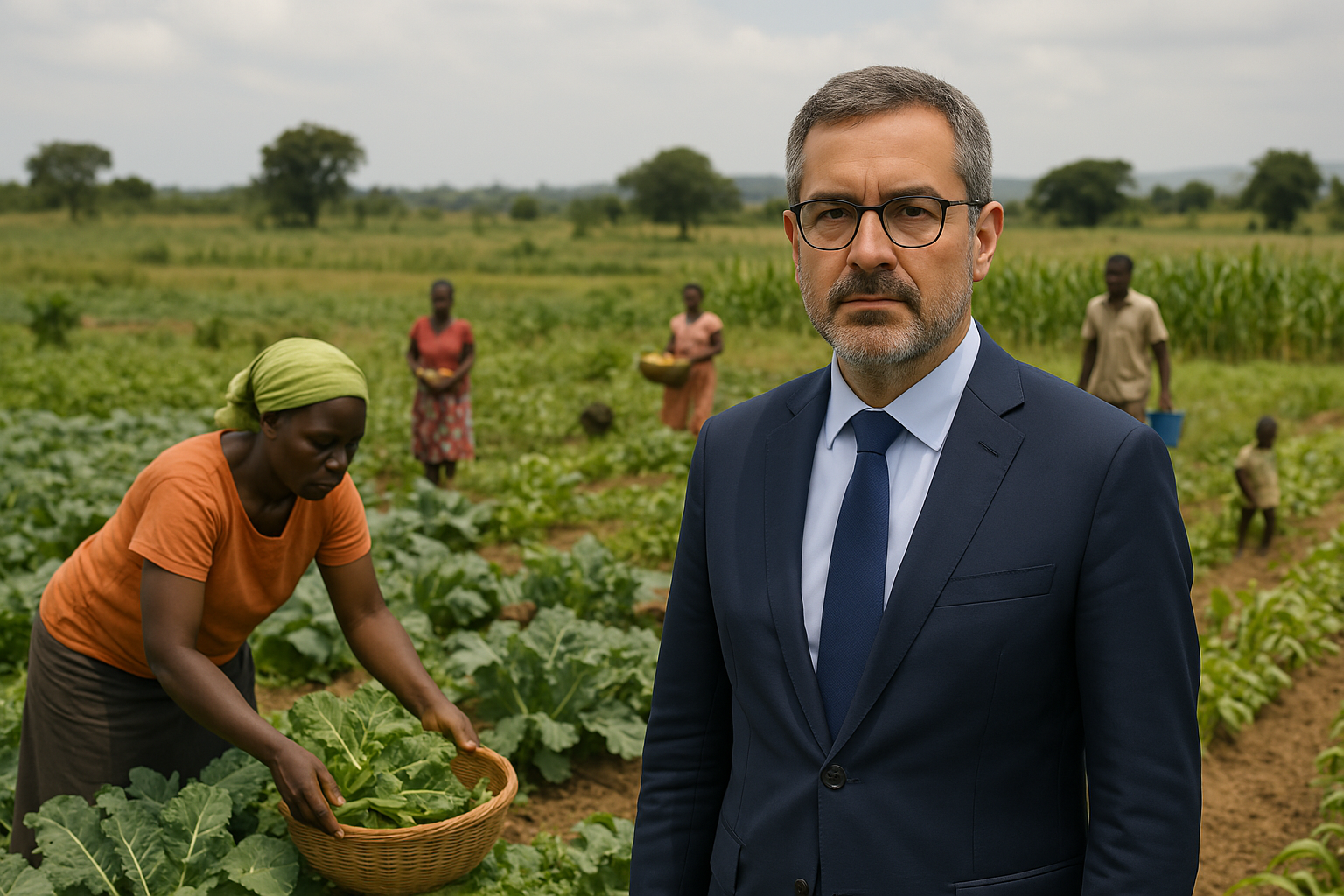Investing in Local Food Systems Can End Global Malnutrition Crisis
Small-scale farmers produce a substantial portion of the world’s food—up to 70 percent of what’s consumed in low- and middle-income countries.

Alvaro Lario, President of the United Nations’ International Fund for Agricultural Development (IFAD), will present a critical message at the Nutrition for Growth (N4G) Summit: investing in small-scale agriculture and local food systems is key to combating malnutrition and building resilient economies worldwide. Lario’s appeal, set to be delivered at the high-level summit on March 27-28, highlights the role of smallholder farmers in creating sustainable, diverse, and climate-resilient food systems capable of feeding future generations.
“Smallholder farms are the roots that sustain global nutrition. Investing so they thrive is not just about feeding people today—it’s also about long-lasting solutions that build resilient and equitable food chains that can feed the world for generations to come,” Lario emphasized in a pre-summit statement.
Agriculture as the Foundation for Nutrition and Economic Growth
Small-scale farmers produce a substantial portion of the world’s food—up to 70 percent of what’s consumed in low- and middle-income countries. Yet, their ability to thrive is undermined by inadequate access to financing, insufficient infrastructure, and limited support for climate adaptation. Lario’s argument is straightforward: by empowering these farmers, the world can address multiple challenges at once, including hunger, poverty, and economic inequality.
Recent data underscores the high economic and social returns of investing in nutrition and food systems. For every US$1 invested in combating undernutrition, an estimated US$23 in economic benefits is generated. Moreover, agriculture-led economic growth is two to three times more effective in reducing poverty and hunger than growth from other sectors.
Diversifying Crops and Diets for Resilience
A key component of IFAD’s strategy involves diversifying the crops that smallholder farmers grow and local communities consume. Of the planet’s roughly 5,000 food plant species, just nine account for the majority of human caloric intake, with rice, wheat, and maize providing half of all calories consumed. However, there are hundreds of locally adapted, nutrient-rich food sources—such as millet, sorghum, beans, and indigenous fruits and vegetables—that can improve diets and enhance climate resilience.
Increased production of these diverse, nutritious crops isn’t enough. Lario stresses the importance of developing value chains that ensure these foods reach markets in a form that is affordable, accessible, and appealing to consumers. This means investing in rural Small- and Medium-Sized Enterprises (SMEs) that bridge the gap between farm production and market distribution. Currently, these SMEs remain critically underfunded, despite being the backbone of food systems in many developing regions.
The Role of Blended Finance and Innovative Tools
Addressing malnutrition at scale requires creative financing solutions. Lario will advocate at the N4G Summit for blended finance approaches that bring together public funding, private investment, and philanthropic resources. By sharing risks and leveraging collective capital, these mechanisms can unlock the substantial investments needed to transform local food systems. Additional tools, such as nutrition bonds, targeted credit instruments, and the mobilization of remittances and diaspora investments, can further enhance funding flows to underserved agricultural enterprises.
Climate Adaptation and Agrobiodiversity
With climate change intensifying, small-scale farmers face growing challenges that threaten food security. Extreme weather, shifting growing seasons, and resource depletion make it increasingly difficult for farmers to maintain consistent yields. Lario will emphasize that climate adaptation is not optional—it is essential. Supporting farmers with climate-resilient seeds, better irrigation systems, and sustainable land management practices is crucial to ensuring that local food systems can endure future shocks.
IFAD’s projects are already working to scale up climate-smart practices and agroecology, supporting initiatives like family gardens, school feeding programs, and improved food storage to reduce waste. By fostering agrobiodiversity and encouraging the use of neglected but nutritious crops, IFAD aims to build healthier, more sustainable food systems.
The Human Cost of Malnutrition
Today, the statistics on global malnutrition are stark. Around 2.8 billion people—one-third of the global population—cannot afford a healthy diet. Malnutrition in its various forms—stunting, wasting, micronutrient deficiencies, and obesity—affects billions. Nearly 148 million children are stunted, 45 million are wasted, and over 2 billion people suffer from deficiencies in critical vitamins and minerals. Furthermore, around 390 million children and adolescents are classified as overweight or obese, contributing to a global health crisis.
The economic impact is equally severe, with malnutrition costing the world economy US$3.5 trillion annually in lost productivity, increased healthcare costs, and diminished human capital. In Africa alone, the economic toll of child undernutrition ranges from 1.9 percent to 16 percent of GDP each year.
A Call to Action
At the N4G Summit, Lario will urge global leaders, donors, and private investors to join forces in scaling up investments that can transform local food systems. With adequate funding, the world can move closer to ending malnutrition, fostering economic growth, and building a more resilient future for all.
“Investing in small-scale agriculture and local food systems isn’t just the right thing to do—it’s the smart thing to do,” Lario said. “Together, we can ensure that everyone has the opportunity to thrive.”










